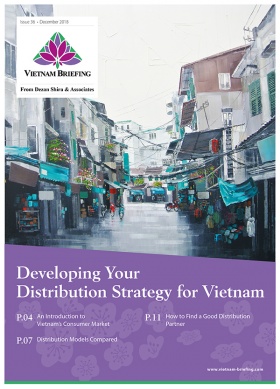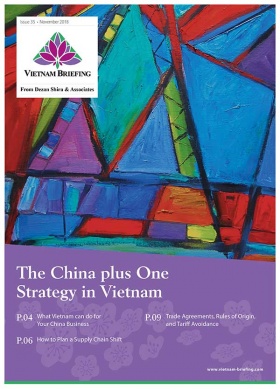Ho Chi Minh City: How Vietnam’s Emerging Megacity Will Develop
Megacity has become a buzzword associated with rapid urbanization and economic development. For Vietnam, the commercial capital Ho Chi Minh City is often identified within this narrative.
Megacities are typically defined as having a population in excess of 10 million. These demographic pressures often inspire governments to produce large-scale development programs designed to integrate infrastructure regionally. In China, this pressure has manifested into a city cluster plan to develop 19 super-regions across the country.
Ho Chi Minh City’s reported population of 8.7 million by the end of 2018 and the absence of a large-scale city cluster plan mean that the commercial capital is falling short on some commonly used metrics. But there are many reasons why Ho Chi Minh City is not far off from becoming a megacity.
Right now, Ho Chi Minh City has an average population density of over 4,500 per square kilometer, higher than Shanghai. The city’s population swells beyond 8.7 million every day as workers travel in from neighboring provinces for business, while at least 200,000 to 400,000 people migrate from rural areas to the city every year – the city will surpass the 10 million benchmark before long.
Meanwhile, Ho Chi Minh City is determined to develop a regional economy that can turn into a growth leader for Vietnam and Southeast Asia. While not comparable to China’s city cluster program, Ho Chi Minh City is developing on a dual track: building the infrastructure needed to serve as a larger commercial hub, while at the same time integrating into the larger Southern Key Economic region.
Ho Chi Minh City is not a megacity yet. But it’s very close.
What factors have led to Ho Chi Minh City’s growth?
Multinational and technology companies often choose Ho Chi Minh City when entering Vietnam.
The city houses the best national universities, research facilities, and the largest international airport in the country. As the most developed city countrywide, Ho Chi Minh City has been serving as the country’s economic focal point.
Ho Chi Minh City accounted for about 22 percent of the national GDP and 29 percent its financial capital in 2018. This is in spite of the fact that the city accounts for only 0.6 percent of the land area and 10 percent of the country’s population.
In 2018, 44,000 new businesses registered in the city, towering above the runner-up capital Hanoi. This reflects the entrepreneurial environment that has given rise to the country’s notable startup scene.
Ho Chi Minh City and its seven neighboring provinces – Binh Duong, Dong Nai, Ba Ria-Vung Tau, Binh Phuoc, Tay Ninh, Tien Giang, and Long An – comprise the Southern Key Economic region, the biggest commercial and innovation hub of Vietnam.
Altogether, the provinces make up 60 percent of the government’s revenues and attract 50 percent of FDI capital in the entire country.
How will Ho Chi Minh City develop?
Ho Chi Minh City wants to become the first smart city in Vietnam by 2020.
The city’s government, for example, plans to offer civil services through cloud computing structure and a big data ecosystem. In December 2017, it partnered with Microsoft to develop and roll out smart IT platforms aimed to address concerns of the city residents related to social security, sanitation, as well as government licensing and procedures.
One such application is the iSCT mobile app, which was launched by the Ho Chi Minh City Department of Industry and Trade last year. The iSCT app is designed to provide e-government services and allow users to learn about commerce and trade policies, as well as voice their opinions about public services.
The Thu Thiem Eco-Smart City project located in the historic land Thu Thiem Ward is one of the most notable developments of the smart city drive. The private-public partnership, funded by South Korea’s Lotte Group at a cost of US $1.9 billion, brings together smart planning and advanced IT infrastructure to build a modern, high-tech area with various convenient services in banking, shopping, and entertainment.
In the longer term, Vietnam plans to develop the entire Southern Key Economic Region, taking Ho Chi Minh City as the central hub, into an economic engine for the whole country. Vietnam wants to make Ho Chi Minh City into an international gateway to the south, and other parts of the country, by taking advantage of the young workforce, fast growth, and high urbanization rate.
This goal makes sense because the city already serves as a center of commerce within the region, connecting transportation systems of all the surrounding areas, while providing them with resources and technology. The government has sought to funnel a total of US $280 billion in development funding to the Southern Key Economic Region in the 2015-2020 period.
In the government-approved master plan, set to be achieved by 2030, with a long-term vision into 2050, the objective is to form a multi-core economic zone, comprised of Ho Chi Minh and seven bordering provinces. This is called the Ho Chi Minh City Zone (“HCMC Zone”).
Under the plan, the central Ho Chi Minh City urban area will focus on developing technology, telecommunication, healthcare, culture and education, while the rest of the region is divided into sub-areas based on different demographic and geographical characteristics, each of which specializes in its strongest industries.
However, the heart of the HCMC Zone is infrastructure projects, which aim to relieve pressure on traffic and space.
As part of the plan, for example, the city encourages moving residential projects to nearby provinces, while restructuring the central districts with smarter and shorter-lease properties, such as offices and retail buildings. Meanwhile, several expressways and inter-city railroads are under construction, as well as river routes and seaports that would serve the entire Southern Key Economic Region.
In the HCMC Zone masterplan, the government defines the multi-core economic zone as the way to transform the city into a regional metropolis. While this has not attracted as much media attention as other super-regions plans in Asia, Ho Chi Minh City deserves to be in the discussion – it’s on the verge of becoming Vietnam’s first megacity.
Vietnam Briefing is produced by Dezan Shira & Associates. The firm assists foreign investors throughout Asia from offices across the world, including in Hanoi and Ho Chi Minh City. Readers may write vietnam@dezshira.com for more support on doing business in Vietnam.
- Previous Article Vietnam: New Requirements for Foreign-Invested Vocational Institutions
- Next Article How to Set Up in Vietnam – Latest Issue of Vietnam Briefing Magazine







